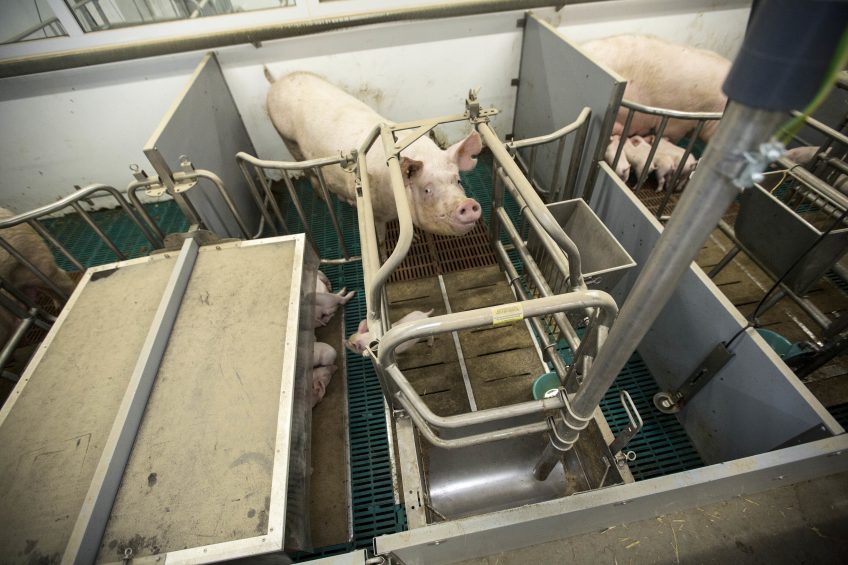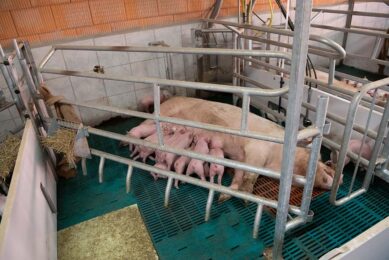Trial on loose farrowing crates: More research needed

Extensive comparative research to loose farrowing in Denmark has yielded for now that none of the 10 participating designs tested scored ‘good’ or ‘very good’ on all operating parameters.
That was the key message of a press release (in Danish) and a report (in Danish) that were published earlier this March. The scientists, led by Lisbeth Ulrich Hansen, therefore have pointed out that there is a need for further development and testing of pen designs.
Meeting demands of sows, piglets and staff
SEGES, the organisation building bridges between research and practical farming, tested 10 designs. Key problem encountered was that it is hard to meet both the demands of sows, piglets and staff in one design.
As none of the designs scored ‘good’ or ‘very good’ on all parameters of the product test, the researchers wrote there is still a need for the development before there is a robust solution that can be a natural choice for all pig producers.
Take a look at Siljebjerggaard Farm where all the trials were done
Testing of 9 parameters
In total, the scientists tested 9 parameters, like e.g. movement of space for sows, the possibility to assist with farrowing, working conditions when locating the sow into the pen and the ease of moving around the pen’s fence.
SEGES tested the following designs:
- Vereijken Hooijer: Pro Dromi;
- Big Dutchman: Free Move;
- Bopil: BeFree;
- Aco Funki: Welsafe;
- Vissing Agro: Opti Farrow;
- Stewa: Wing;
- Midland Pig: 360;
- Jyden: JLF14;
- SEGES & Copenhagen University: SWAP, version 2
- Søren Juul Jensen: WellfairPen
Read here Vivi Aarestrup Moustsen’s expert opinion on the experiences gathered at the trials
Experience and inspiration
SEGES already acquired experience and inspiration with regard to the criteria when developing its own system called SWAP, version 2. SWAP is an acronym for ‘Sow Welfare and Piglet Protection’.
The research was carried out on the basis of Danish goals that by 2020 at least 10% of sows has to be able to move around freely in the farrowing crates, until a moment shortly before farrowing. During farrowing she will be fixated.











